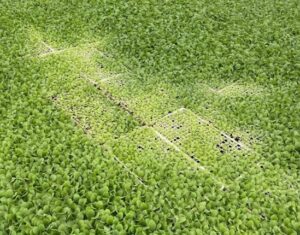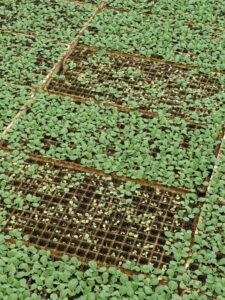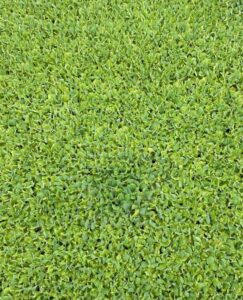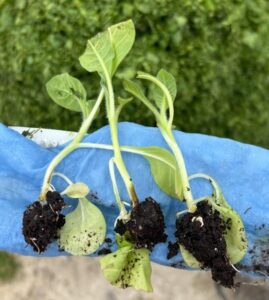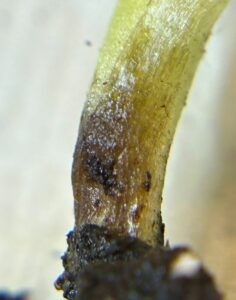Molds and Menaces: Tobacco Greenhouse Diseases and the Like
go.ncsu.edu/readext?996083
en Español / em Português
El inglés es el idioma de control de esta página. En la medida en que haya algún conflicto entre la traducción al inglés y la traducción, el inglés prevalece.
Al hacer clic en el enlace de traducción se activa un servicio de traducción gratuito para convertir la página al español. Al igual que con cualquier traducción por Internet, la conversión no es sensible al contexto y puede que no traduzca el texto en su significado original. NC State Extension no garantiza la exactitud del texto traducido. Por favor, tenga en cuenta que algunas aplicaciones y/o servicios pueden no funcionar como se espera cuando se traducen.
Português
Inglês é o idioma de controle desta página. Na medida que haja algum conflito entre o texto original em Inglês e a tradução, o Inglês prevalece.
Ao clicar no link de tradução, um serviço gratuito de tradução será ativado para converter a página para o Português. Como em qualquer tradução pela internet, a conversão não é sensivel ao contexto e pode não ocorrer a tradução para o significado orginal. O serviço de Extensão da Carolina do Norte (NC State Extension) não garante a exatidão do texto traduzido. Por favor, observe que algumas funções ou serviços podem não funcionar como esperado após a tradução.
English
English is the controlling language of this page. To the extent there is any conflict between the English text and the translation, English controls.
Clicking on the translation link activates a free translation service to convert the page to Spanish. As with any Internet translation, the conversion is not context-sensitive and may not translate the text to its original meaning. NC State Extension does not guarantee the accuracy of the translated text. Please note that some applications and/or services may not function as expected when translated.
Collapse ▲With tobacco in the greenhouse and warmer temperatures coming soon, there is a higher risk of diseases caused by pathogens that thrive in warm, humid conditions.
A few disease to watch out for:
- Pythium root rot will cause severe stunting and yellowing. Root may appear healthy or may be sloughed off.
- Bacterial soft rot (Pectobacterium carotovorum) will cause stem rot with stunted roots. Seedling stunting and yellowing may also occur.
- Damping off/Target spot will cause stem rot, and/or leaf rot. Leaves will show water soaked lesions that develop into a ‘bullseye’ lesion.
- Yellowing and stunting of supected Pythium root rot (Brittany Pendleton, Nash County Extension Agent)
- Damping off from suspected Rhizoctonia solani infection (Anna-Beth Williams, NCDA & CS Regional Agronomist)
- Green patch delayed seedlings with bacterial soft rot
- Seedlings with bacterial soft rot with no roots (Daisy Ahumada)
- Decayed lesions from bacterial soft rot (Daisy Ahumada)
There have been no recent notes of collar rot (Sclerotinia sclerotiorum), black root rot (Berkelomyces basicola), or Tomato Mosaic Virus (TMV).
However, not all fungi are bad. Some fungi are molds, such as Penicillium, Aspergillus, Cladosporium, which are a natural part of decomposition. They are equipped to decay growing media and clippings, but not live plants. While these molds will not affect germination or growth of seedlings, they can be aesthetically unattractive. They are also an indication that the greenhouse environment is at an ideal humidity and temperature for microbial growth, including pathogenic microbes.
How to manage molds and menaces?
Increasing air circulation to reduce humidity in the greenhouse will lower the risk of diseases developing.
Sanitation is the key to success.
Trays can have soil, debris, and most importantly, spores from pathogenic microbes.
Steaming trays at 175°F for 30 minutes before use is sufficient for sanitizing trays. A newly made 10% bleach solution may also be used, though make sure the bleach is rinsed off with water before use.
Steaming does not kill off Berkelomyces basicola, which causes black root rot, nor Tomato Mosaic Virus (TMV). If these diseases are identified, the infested tray should be disposed of.
Dispose of clippings at least 100 yards from the greenhouse, so fungi do not grow on them and spread back into the greenhouse.
Milk and mowers! 10-30% skim milk solution or 10% bleach solution, followed by water rinse may be used to clean mowers between uses.
Greenhouses are not perfectly enclosed, and pathogens may spread in trays even with proper sanitation.
Terramaster 4EC is labeled to prevent or rescue plants from further Pythium root rot development. Preventative applications of 1.0 fl oz/100 gal of float water may be applied at 3-8 weeks, while curative applications of 1.4 fl oz/100 gal of float water may be applied when symptoms are observed.
Quadris Flowable (0.14 fl. oz/5 gal/1000 square ft) and Manzate Prostick (0.5 lb per 100 gal) are labeled to prevent target spot.
Follow all label applications to prevent injury and fungicide resistance.
To set up the crop for success next season, trays should be cleaned and sanitized and stored in an enclosed area to prevent contamination from drifting chemicals and spores. Sanitize again before use and change old trays out.
More information on the Tobacco Greenhouse Guides:
https://tobacco.ces.ncsu.edu/wp-content/uploads/2015/12/Tobacco-Greenhouse-Guide-2016.pdf?fwd=no
https://content.ces.ncsu.edu/tobacco-greenhouse-production



